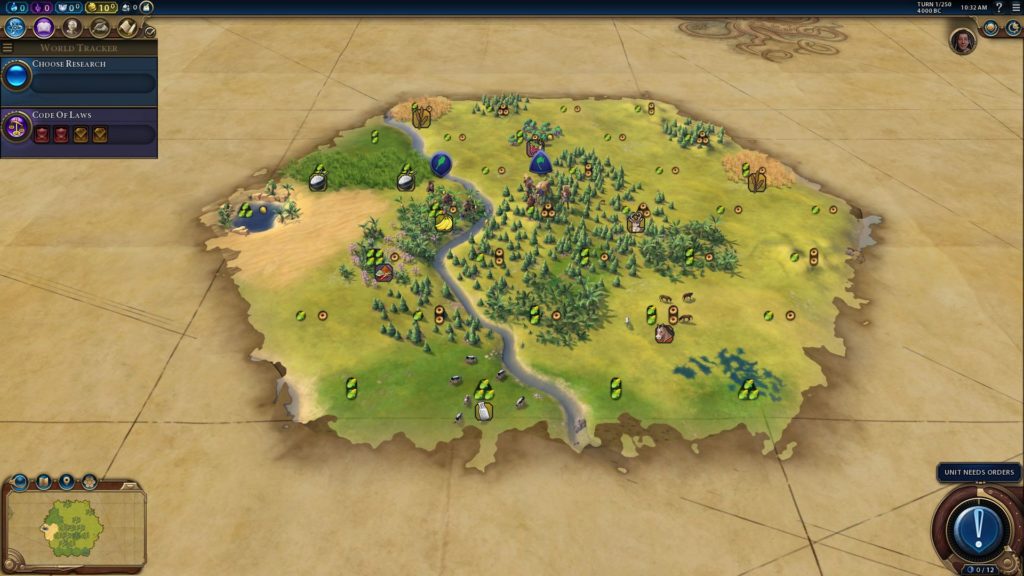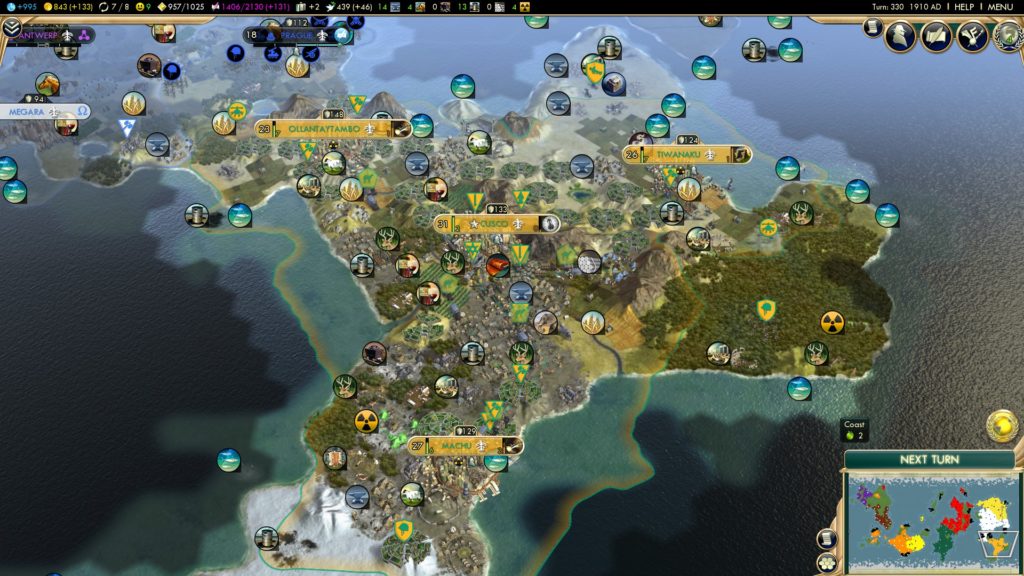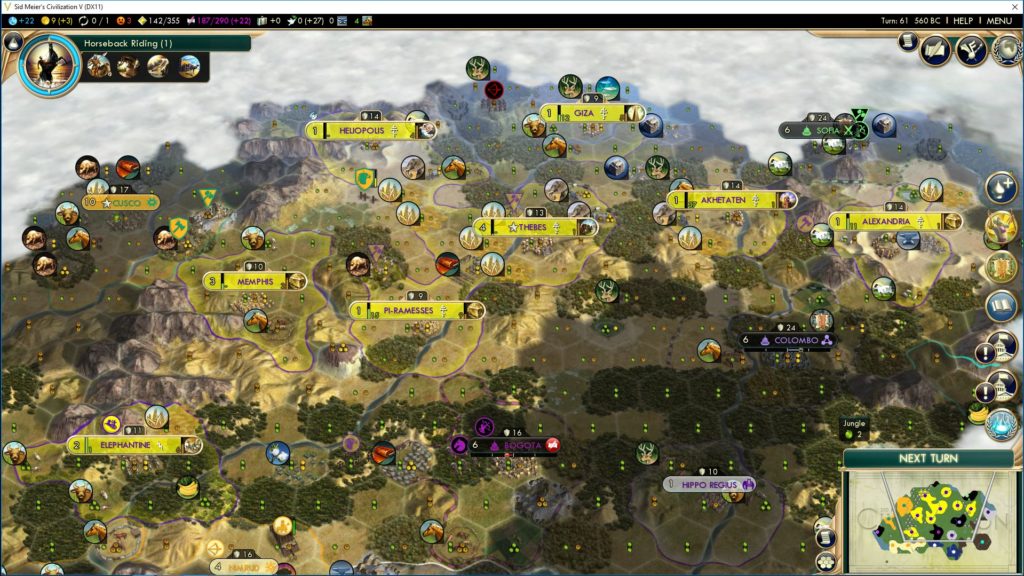Back in 2019, I explored how playing strategy games taught me about strategic leadership. I would even go as far as saying that spending hundreds of hours on them when I was younger, proved instrumental in making it easier for me to design high-level strategic plans during my leadership journey. Recently, I spent some time reflecting on a concept I came across as a gamer, growing tall vs growing wide.
This concept is often debated amongst players of the Civilization series of games and also applies to other grand strategy games. However, I have not been able to find anything exploring possible applications of this concept in real-life, especially in the context of organisation-wide strategies and strategic visions and plans.
In the first article of this series, we will begin by exploring the origins of the concept.
A brief introduction to Civilization games
The goal of the player in a game of Civilization is very easy in appearance. From a very humble start in 4000 BC with a single small city of 1,000 souls and a warrior unit, build a civilisation that will last the test of time, surpass your rivals and eventually win the game. You player, have many options at your fingertips to win the game. A score victory in 2050 AD is one possibility. Conquering and dominating your rivals with military strength can lead you to victory. Another choice is investing in culture so that the entire world looks up to you and imitates your fashions and mannerisms. My favourite and final victory option; is to build a spaceship to settle another planet and become an interstellar civilisation.

In-game, every terrain tile produces resources which could be food (corn in the above picture), money (gold nugget), production (gears), culture (music notes) or science (beakers). Additionally, strategic resources lie on some terrain tiles. Iron will give you more production and the ability to build swordsmen. Wine more gold and happiness for your population etc. Terrain resources are produced by the citizens in your cities working terrain tiles. To have more citizens and more population you will need more food. To build new cities, you will need production to produce settlers. To progress in science, you’ll need more science and research. Social development in your civilisation will be driven by culture. Money has many uses and is needed to maintain your armies and the buildings in your cities.
All of these resources are important, and at the start of the game, you need more of everything to grow and prosper. Several strategies are available to the player to do this and gain more resources. This is where growing tall or growing wide enter the scene.
Tall growth strategies
If you choose a tall growth strategy your focus will be on the internal development of your civilisation. Your sole focus in the early phase of the game will be to build a few optimally placed cities. Spots near rivers, grassland tiles rich in food and strategic resources will be best. A good player will also space out its cities as much as possible to maximise the radius worked by each and avoid overlapping zones of influences. City placement will additionally focus on long-term gains as opposed to short term ones.
For example, a city near hills may not be profitable initially, especially if food is scarce. However, after new technologies are discovered, mining the hills and building factories and dams in the city, will turn it into a production powerhouse. In game, the player may have to wait hundreds or even a thousand years for this to happen. But eventually, this shining city around hills could be the one that produces spaceship parts and other expensive items needed for a science victory quickly.
Once the player’s empire reaches an optimal size, it will stop expanding, and all production will be reinvested in internal development. A tall growth strategy will involve heavy investments in infrastructure, farms, workshops and districts to keep the cities growing. Many buildings will be built in cities, from libraries increasing science output to stock exchanges yielding more gold. The focus of the player’s military will be defensive, and diplomacy will be used to extract concessions from other civilisations. By the end of the game, every city owned by the player will be specialised in maximising one output. It will typically include a forge city focusing on producing units and projects quickly, a university city targeted at science, a bank city yielding gold aplenty and an arts centre pumping out culture.

In short, this strategy focuses on quality above everything else and maximum returns on investments. It can be very effective to win the game via culture or science. It will also generate vast economies as fewer cities, buildings etc. will need to be maintained.
However, tall growth strategies have some clear downsides. Firstly, there are opportunity costs in focusing on long-term instead of short-term gains. These could be missing out on wonders which provide further benefits, or cities remaining small until some technologies like irrigation are available. Secondly, limited geographical expansion can mean losing out on strategic resources like oil or uranium which are quite rare. Finally, tall empires are more vulnerable to aggressive neighbours with larger armies. Losing one city out of ten average ones is bearable. But if you have four well-developed cities, losing one will be a tragedy.
Wide growth strategies
Deciding to go wide, means focusing on fast expansion until no more land is available to settle. It can additionally mean building as many cities as possible on what land is available. Players with this strategy will focus on production to churn out as many settlers and military units as possible. Because every city generates some resources, it will not matter so much if cities radii overlap. Consequently, cities could be built to secure strategic resources, without giving much thought to their long-term productivity. Wide empires will also aggressively settle cities next to the borders of other civilisations to box them in. Additionally, when the player can cross oceans, intercontinental expansion and settling cities on other landmasses is a possibility.

Should overseas expansion not be available to wide empires, expanding through wars is possible to steal the resources and wonders of other players. Wide empires will have different production priorities to tall empires. Military development will be more important, both to defend the lands and to grab others if necessary. Communication infrastructure such as roads will be strategically significant as well. Cities will be developed later, and some may remain small right up to the end of the game. Specialising cities will not be as important, since quantity will provide the resources that the player needs to win. While a wide strategy can benefit from a core of one or two well-developed cities, this core is not essential.
Prompt aggressive expansion, risk-taking and calculated short-term gains are the hallmarks of wide strategies. It can be just as or even more powerful than a tall strategy under the right conditions. The first benefit of playing wide is near-guaranteed access to all strategic resources and therefore more flexibility to do certain things. The second benefit is that wide empires can afford to ignore diplomacy to an extent as they will have everything they need. Finally, and perhaps most importantly. Going tall after going wide is possible while the converse is not. A carefully planned and thought out tall wide empire, can be a superpower of colossal proportions and win the game for the player almost by default.
Wide and tall strategies in the real world
There are countless real-life parallels and examples of wide vs tall leadership strategies in the real world. In some cases, said strategies were unintentional, but the results almost perfectly match those observed in strategy games. Historical empires such as the Russian, British and Spanish empires pursued large-scale territorial expansion in the pursuit of power and supremacy over rivals. A perfect historical example of a once major power that opted for a tall strategy is the now forgotten Republic of Venice. Venice was once so powerful that it dominated trade in the Mediterranean for several centuries, and contributed to the destruction of the once all-powerful Byzantine Empire. If we cast our eyes to the corporate world, the franchising model of major chains is a near-perfect example of a wide growth strategy. Whereas one of many examples of growing tall is the fortress hub model adopted by some airlines, chiefly British Airways. I will be exploring real-life examples in more details in a futures articles.
One of the articles in this series will also outline how leaders in my organisation, Toastmasters International, can apply the concepts when designing strategic plans. I will include actual examples of how using data can help leaders decide whether to grow tall or grow wide. Finally, I will explore whether the organisation as a whole should grow tall or grow wide in the eventual aftermath of the pandemic.